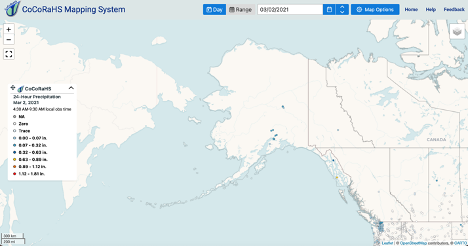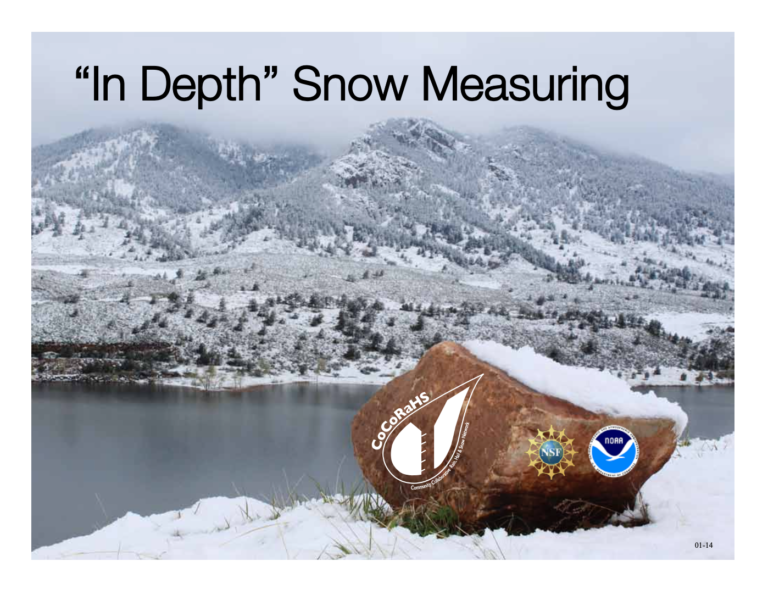CoCoRaHS
The Community Collaborative Rain, Hail and Snow (CoCoRaHS) Network is a non-profit community-based network of volunteers that measure and map precipitation nationally using low-cost measurement tools such as rain gauges, hail pads and home-built snow boards. Dr. Martin Stuefer, director of the ACRC, is the Alaska state coordinator for CoCoRaHs and post-doc, Dr. Ulyana Horodyskyj, of the ACRC, is the assistant state coordinator.
An interactive webpage allows users to see the CoCoRaHS network and real-time data at a national level, while allowing them to input their own data, collected with CoCoRaHS approved field equipment. Since emerging in 1998 at the Colorado Climate Center in Colorado State University, CoCoRaHS has expanded its network to all 50 states and is sponsored by NOAA and the NSF. End users include the National Weather Service, hydrologists, emergency managers, city utilities (water supply, water conservations, storm water), the USDA, engineers, ranchers and farmers, as well as teachers and students.
CoCoRaHS stresses not just data collection, but education and training of the greater public, with the main objectives including: providing accurate and high-quality precipitation data for end users on a timely basis; increasing the density of precipitation data available throughout the country through volunteer weather observing; encouraging citizens to have fun participating in meteorological science and heightening their awareness about weather and weather changes; and providing enrichment activities and water/weather resources for teachers, educators and the community at large.
Click on the image above to fill out an application form for collecting measurements in your own backyards in Alaskan communities!
For any questions, as well as assistance needs with current precipitation stations, please send us a message at: uaf-climate@alaska.edu
Alaska’s first precipitation measurements started in the Spring 2007, in the Anchorage region, before expanding to parts of western Alaska, Juneau and Ketchikan. By 2014, observations had increased inland, in Fairbanks, AK.
Alaska covers a third of the lower 48 states in terms of acreage. There is a strong need for more observations throughout the state, including inland and coastal regions, to better understand precipitation and precipitation changes.
Snow covers Alaska regionally for more than 8 months per year and impacts the lives of many Alaskan residents. Data on snowfall and snow depth is important for planning and for looking at long-term climate trends. It is frequently windy when the snow falls at typically well below freezing temperatures and, thus, representative measurements are non-trivial. The more community observations that can be made, the better understanding we can have on Alaskan snow cover.




